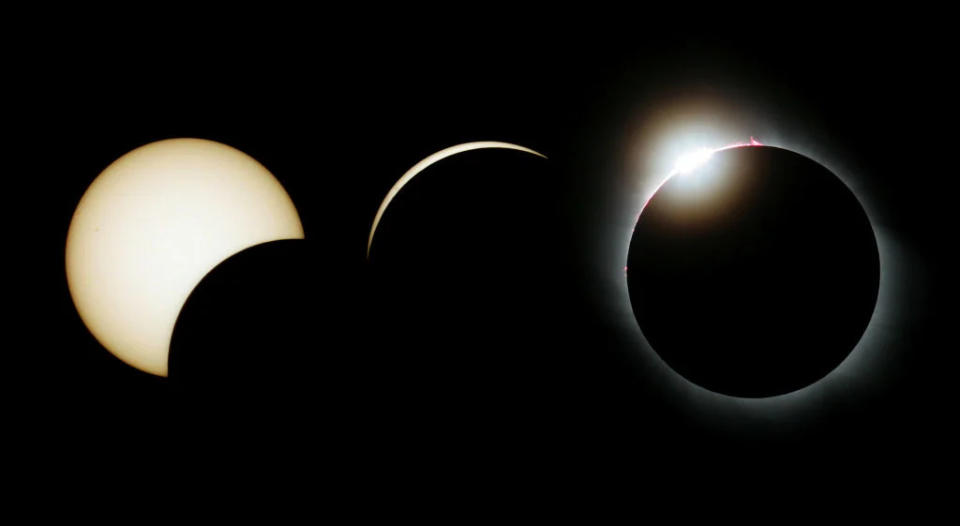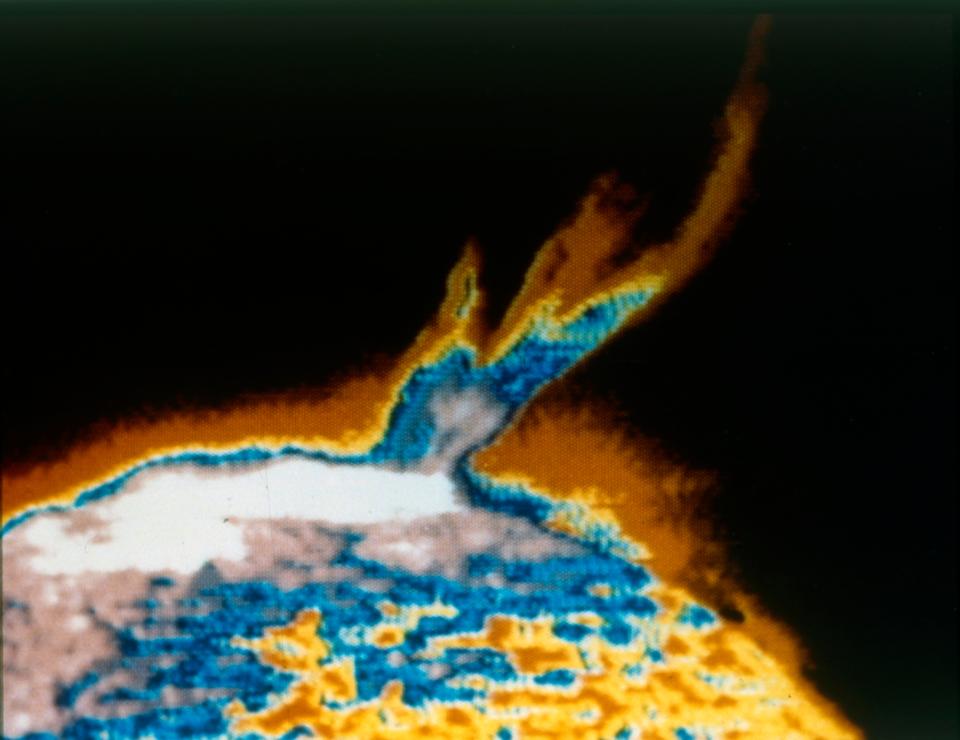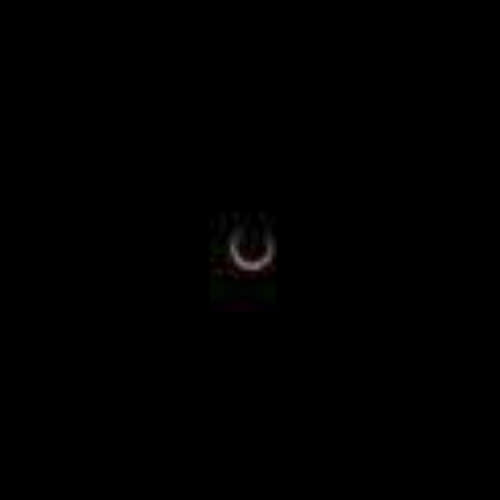NASA wants you to help gather Sun data during total solar eclipse
If you have always wanted to be a NASA scientist, here is your chance. NASA is involved in several scientific research projects that need your help if you are along the path of totality during the America's Total Eclipse on April 8th.
The required equipment is as simple as a cell phone for one of the projects to as advanced as programming in the Python computer language for another. Other projects require anything from a computer to a camera to a telescope.
"How many times does the average citizen get to say, ‘I got to be a NASA scientist for the day,’ with the equipment they've already got in their pocket?" astrophysicist and principal investigator for SunSketcher, Gordon Emslie asked. "We will use their data, and their data will make a difference."
TOTAL SOLAR ECLIPSE TRACKER: CLOUD FORECASTS FOR CITIES, STATES IN PATH OF TOTALITY

The easiest citizen scientist project to take part in is SunSketcher. Simply download an app onto your smartphone, then prop it up or put it on a tripod and start recording before the eclipse. The app does the rest. All the downloaded photos will allow scientists to measure the shape of the Sun and you get to keep your photos of the eclipse.
"Our Sun is not quite a perfect sphere. Knowing our Sun’s true shape would give scientists new clues about its mysterious interior and test theories of gravity," NASA wrote. "But precisely measuring the shape of this enormous nearly-round object has been challenging - until now."
Your help could teach astrophysicists to more accurately forecast solar storms. The corona, the upper portion of the Sun's atmosphere, becomes visible when the Sun's light is blocked by the Moon.

"The event presents a perfect opportunity to shed light on phenomena such as solar flares and coronal mass ejections, or CMEs, billion-ton clouds of magnetized plasma ejected from the sun," NASA wrote. "To learn about their dynamics, researchers must study a region of the Sun that reveals itself during an eclipse, the corona."
If facing the Earth, a CME can take out the internet and more.
"With sunspots, appear solar flares, mass ejections, you can get auroras, and if a really particularly powerful solar eruptive event or flare, its called, is aimed at the Earth, you can get a billion tons of material traveling toward the Earth at a million miles an hour," Emslie said. "And that has serious potential to disrupt satellites, both in terms of communication capabilities. It can cause power grids to break down, transformers to explode."
SOLAR SUPERSTORM COULD ‘WIPE OUT THE INTERNET’ FOR WEEKS OR MONTHS, SCIENTIST SAYS

He said the ability to predict these events is essential for our society, which is dependent on technology. To predict solar storms, scientists need to know more about the flows inside the Sun that produce the flares.
Solar telescopes can create an artificial eclipse using a disk called a coronagraph. However, according to NASA, a man-made coronagraph also blocks the sun's inner corona, where the CME ejections originate. The moon makes a better coronagraph at totality.
SunSketcher will also make micro-measurements of Baily's Beads – flashes of sun shining through valleys on the Moon's surface – to measure the size and shape of the Sun. He said the photos of dots of light around the Moon may not look impressive to the casual observer, but the phone and app can time when the flashes appear and disappear by milliseconds.
ECLIPSE PHASES: WHAT ARE BAILY'S BEADS AND DIAMOND RING?

"And so the only way to get more than a few minute's worth of data is by combining information from lots of different people," Emslie said. "We need lots of volunteers because everybody looks at the Sun from a slightly different angle, at a slightly different time, and therefore, we build up a much bigger set of data that we can use than any one observer could possibly make on their own."
You can sign up, download the app or find out more at SunSketcher.org.
He continued that this was not possible 10 to 15 years ago because cell phone cameras, timing, and GPS information weren't as good.
NASA TO LAUNCH ROCKETS INTO MOON’S SHADOW DURING GREAT NORTH AMERICAN ECLIPSE

Look no further than the ocean to understand how scientists can learn about the flows and physics inside the Sun by studying its outer surface.
"Just as waves and disturbances under the ocean of the Earth make ripples on the ocean and earthquakes in the Earth can make ripples on the surface of the Earth, the constant flow and churning of gas underneath the surface of the Sun that shows up as waves, ripples, disturbances on the edge of the Sun and therefore affects the shape," Emslie said. "It turns out very subtle differences have important reasons behind them. By studying the detailed shape, we learned about the interior of a sun."
X MARKS THE (SUN)SPOT: HOW NASA RATES THE STRENGTH OF SOLAR FLARES
And this eclipse will be even more spectacular because the sun is at the peak of its 11-year solar cycle.
"The sun is much more active than it was during the last eclipse in 2017. Much more interesting features should be evident on it," added Emslie. "And just for people looking at the eclipse, you'll see much more interesting things. These prominences, diamond rings, the pink chromosphere will be much more interesting."
Emslie assured FOX Weather that only the GPS coordinates, time and recorded images would be downloaded. No personal or identifying data will be captured.
Other NASA projects include making Eclipse Megamovie 2024.
Citizen scientists will capture more images of the corona with other projects too.
Original article source: NASA wants you to help gather Sun data during total solar eclipse
